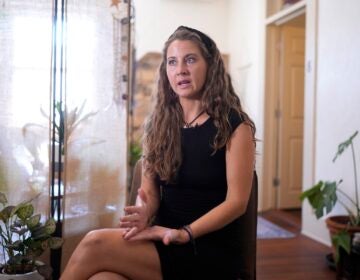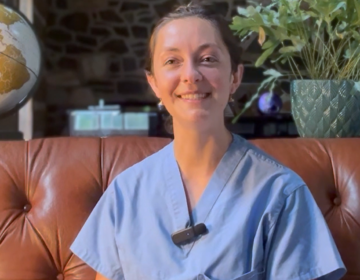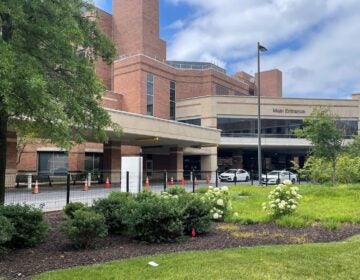Fight rages over medical malpractice lawsuits in Pa. as report fails to settle the dispute
The overall number of active medical staff practicing statewide increased before and after the changes of the early 2000s.

(Christopher Millette/PennLive)
Spotlight PA is an independent, nonpartisan newsroom powered by The Philadelphia Inquirer in partnership with the Pittsburgh Post-Gazette and PennLive/Patriot-News. Sign up for our free weekly newsletter.
In 2003, with the state’s health-care industry warning that doctors were fleeing in record numbers as a result of soaring malpractice insurance costs, the Pennsylvania Supreme Court agreed to make a highly controversial move.
For the first time, patients would be allowed to sue for medical malpractice only in the county where the alleged injury happened. Previously, they could sue in any county where the provider operated, allowing them to choose the venue where a jury might be most sympathetic.
Now, more than 15 years later, a new independent study casts doubt on the underlying reason for the change, concluding that the number of doctors practicing in Pennsylvania does not appear to be closely tied to the cost of malpractice insurance.
The long-awaited report, released earlier this month by the bipartisan Legislative Budget and Finance Committee, was supposed to take politics out of a contentious debate that has pitted some of the state’s most powerful special-interest groups against each other.
Instead, the report was unable to answer many of the questions it was intended to address, only fueling the ongoing information war between the state’s health-care industry, which wants the rule kept intact, and trial lawyers, who want to see it scrapped.
As the Supreme Court weighs whether to make a change, each side is now claiming victory.
On the one hand, the health-care industry has revived its claims that a crisis would ensue if the rule were to be undone.
“I think it provides real pause and reasonable doubt for anyone who proposes to change this rule,” said Warren Kampf, a senior vice president at the Hospital and Healthsystem Association of Pennsylvania.
On the other hand, trial lawyers said the report does not support those dire predictions. And, they argue, the current rule has harmed patients because juries in some counties, especially in rural areas, are seen as far less friendly to malpractice claims than others.
“This rule was unnecessarily created to benefit and privilege one special class of defendant,” said Jason Matzus, a malpractice attorney in Pittsburgh who set off the latest round of debate when he asked the Supreme Court to reconsider the rule in late 2017.
The court, where Democrats have a majority, will have the final say on whether to keep or amend the rule, but it had agreed to postpone its decision until the report was published. Republicans who control the legislature mostly oppose any change, potentially setting up a showdown between the two branches of government.
Outgoing House Speaker Mike Turzai (R., Allegheny) warned last year that a move to reverse the rule would be “an invitation to a constitutional fight between powers.”
The dispute dates to the early 2000s, when several major malpractice insurers stopped offering policies in Pennsylvania and premiums for some medical specialties spiked, prompting claims that doctors were being driven from the state.
Senate Majority Leader Jake Corman (R., Centre) said last year he remembered “standing on the steps of the Capitol, watching a lot of those white coat doctors walking by and saying, ‘We just cannot practice here in Pennsylvania anymore’ and dropping their coats in a symbolic exit.”
Lawmakers intervened first, passing a bill requiring the change. But an appeals court ruled the law was an unconstitutional infringement on the authority of the judicial branch. The Supreme Court then made the change by altering the rules of civil procedure.
In response to the latest request to change the rule, the hospital industry and the state medical association have revived warnings about an exodus of doctors, but the report challenged the basis of that claim.
“We would not expect to see a significant decline in the number of Pennsylvania physicians practicing medicine in the commonwealth if the venue rule changes again,” Christopher Latta, the committee’s deputy executive director, told members when the study was released.
In fact, the report found, the overall number of active medical staff practicing statewide increased before and after the changes of the early 2000s. But the report left open the possibility that reversing the rule could affect access to health care more broadly, saying that with so many variables and a lack of data, it was impossible to know what would happen.
And although the 2003 rule is often credited with lowering insurance costs, which supporters cite as evidence that it worked, the study found the decrease was probably due to wider national trends, instead.
The committee was not asked to recommend whether the rule should be changed.
At the heart of the controversy is a perception that juries in Philadelphia are more likely to side with alleged victims than in conservative, rural counties. Trial lawyers argue that the 2003 rule keeps victims from being fairly compensated and gives hospitals and doctors an unfair advantage in litigation.
Because of a lack of data, however, it’s impossible to know how overall outcomes differ from county to county. Most victims of malpractice do not file lawsuits and most cases settle out of court.
Without conclusive findings from the report, the debate is sure to continue. Sen. Lisa Baker (R., Luzerne), who introduced the resolution calling for the report and chairs the Judiciary Committee, said she plans to hold a public hearing in the spring.
That would likely be a chance for each side to rehash familiar arguments.
“We’re in somewhat uncharted waters,” said Matzus, the malpractice attorney. “It will be interesting to see what the Supreme Court does.”
Spotlight PA receives funding from nonprofit institutions and readers like you who are committed to investigative journalism that gets results. Become a Founding Donor today at spotlightpa.org.
WHYY is your source for fact-based, in-depth journalism and information. As a nonprofit organization, we rely on financial support from readers like you. Please give today.




